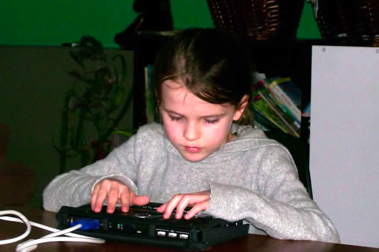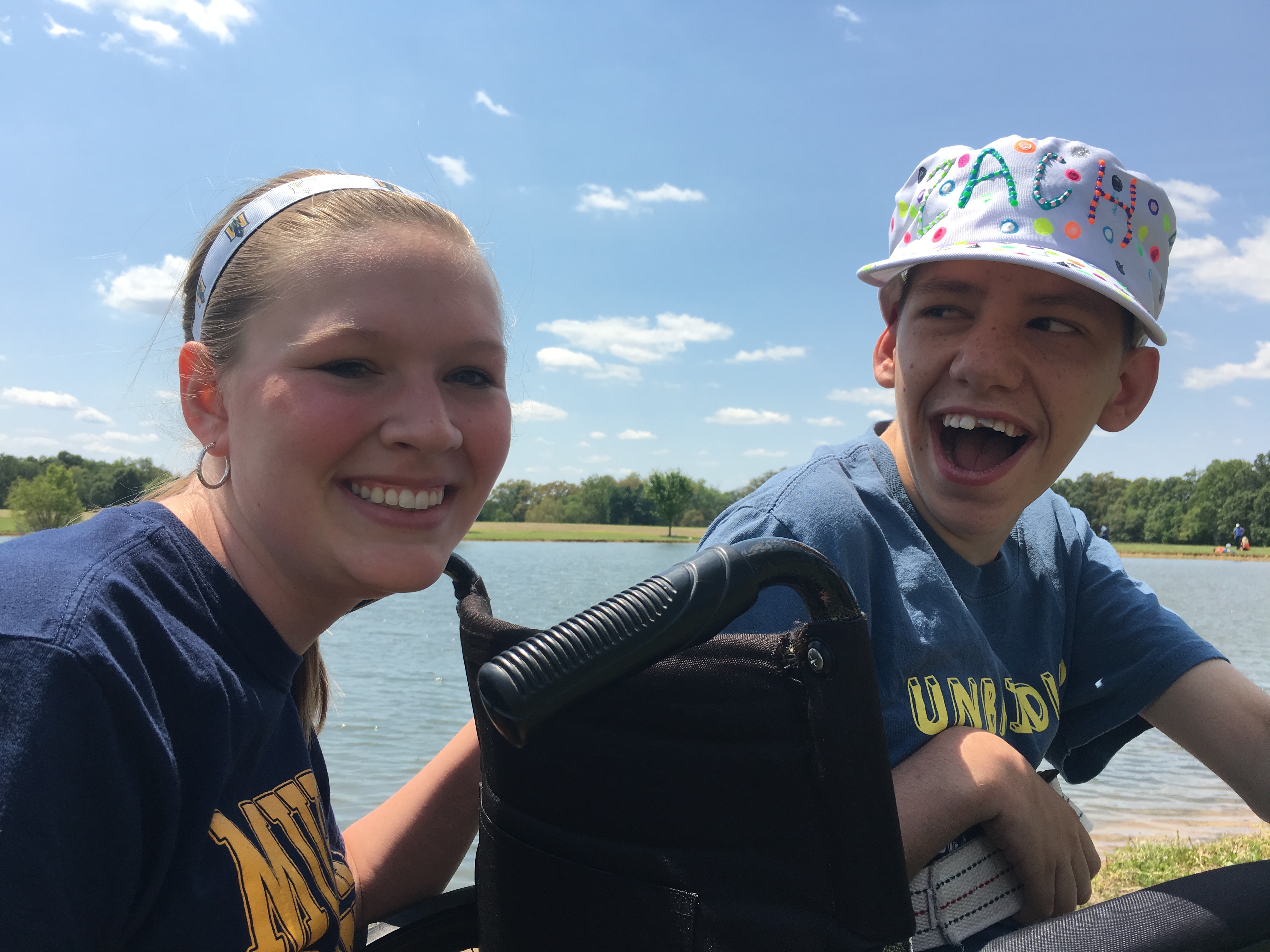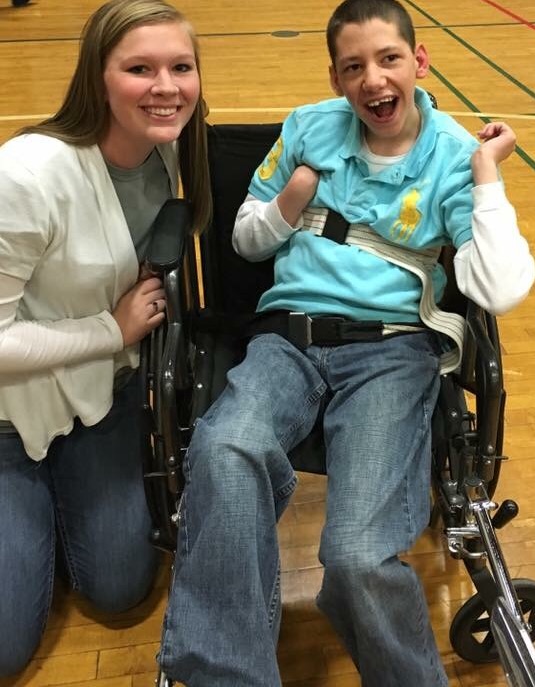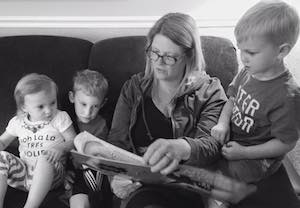There were eight students. Seven boys, 1 girl.
As you can see, there was much layering of disabilities.
During our interview, the Principal told me I was the 5th teacher he had interviewed for this position. The other 4 had said “No thank you.” They walked out. School would be starting the following week. He was nervous.
I said yes.
This would be my first year teaching, after graduation. I had completed a one-year assignment as a substitute for a class of 10 boys, EBD and LD. That too was a not very ordinary situation, but this made that look fairly benign.
I received an emergency certification to teach students with Multiple Severe Disabilities, and off we went.
By Christmas I was exhausted. The commute was 105 minutes one way. That was my sitting time because once I arrived, I never sat down again until I got in my truck to go home. Sometimes I was surprised to turn in my driveway because I didn’t remember driving. Every morning I arrived early, got their breakfast from the cafeteria, and ground it up in little food processors. Those boys arrived at school hungry!
Only one of “my” boys was on a Graduation Track. He was very bright, and had severe Autism. The rest would, each year, receive a social promotion, and were expected to attend school until age 21. As I got to know the children, as we worked together and I began to see their hidden potential to learn, by the end of the year I felt like the "social promotion track" was appropriate for only 3 of the students. Now, with improved outcomes for students due to increased emphasis on best practices including UDL, effective modifications, research-based interventions and nationally recognized allowances, I might feel differently about even the most disabled student in that class. The one who came with a warning.
According to an article in disabilityscoop, the national graduation rate of students with disabilities rose to almost 65% during the 2014-2015 school year, which was the fourth year of consecutive growth. In 2005, approximately 35-40% students with disabilities graduated high school. I remember discussing this in a class. It was quite bleak. A 25% increase is something all educators should be proud of, but it’s not time to put our feet up.
In Indiana, in 2013, 87% of the Senior class received a diploma, 69% of Seniors in Special Education did, according to Education Week. For a good breakdown of special education outcomes in Indiana, including statistics on post-high school engagement in college and job-related activity, please see this supplement: Indiana State Highlights 2015 Special Education Landscape. If you love statistics and comparing numbers, you will find this fascinating.
Indiana is fortunate to have a unique system of supports to help you serve your students with disabilities: the PATINS Project, the ICAM, and the IERC.
Together we make educating fun, real, and effective. Our team of Specialists are always available to assist you with services and tools and methods designed to improve outcomes for students, and to point you in another direction if needed. We are, however, only part of the equation.
Last week at the PATINS State Conference, I had the opportunity of meeting many educators who were overflowing with enthusiasm and hope, a genuine love for teaching, and a deep desire to do that well. You are the reasons our students continue to enjoy improved graduation numbers, which leads to improved lives.
We cannot thank you enough.



 As I was chatting with my daughter the other day she mentioned that she was registering for her senior classes at Murray State University. What? How had the last 16 years passed by so quickly? Courtney was in Kindergarten when I took the assistive technology job with PATINS as a Coordinator. I was new to the field and Courtney became my test subject. I was convinced that this Kindergarten student who told me endless stories non-stop could become a great writer with a little help from Co:Writer. I did not realize that although word prediction was a powerful tool, the student had to have enough tools to guide the story rather than letting the word prediction change the focus of the story. She would begin in writing about a bat, but when she typed ba and it predicted ball her story would take a new direction. It was a great lesson that I needed to learn and she would help me learn many more lessons over the years. I am happy to report that she is a great writer and although she never used word prediction, she was cognizant of this tool as well as many others. She now uses both low-tech (a wonderful proof-reader and my best friend, Donna) and high-tech (Grammarly).
As I was chatting with my daughter the other day she mentioned that she was registering for her senior classes at Murray State University. What? How had the last 16 years passed by so quickly? Courtney was in Kindergarten when I took the assistive technology job with PATINS as a Coordinator. I was new to the field and Courtney became my test subject. I was convinced that this Kindergarten student who told me endless stories non-stop could become a great writer with a little help from Co:Writer. I did not realize that although word prediction was a powerful tool, the student had to have enough tools to guide the story rather than letting the word prediction change the focus of the story. She would begin in writing about a bat, but when she typed ba and it predicted ball her story would take a new direction. It was a great lesson that I needed to learn and she would help me learn many more lessons over the years. I am happy to report that she is a great writer and although she never used word prediction, she was cognizant of this tool as well as many others. She now uses both low-tech (a wonderful proof-reader and my best friend, Donna) and high-tech (Grammarly).
 Which brings me to Mimi and my grandkids. We have 5 ranging from 6 years of age down to 6 months. From a very early age, Mimi would “read” picture books to each one. It only has a picture and is wordless, but she would describe the picture in a way that would tell a very short story. As each one has grown older, she would ask if they would like for her to read to them. “Bring me a book”, she will say if they don’t already have one in hand. She has never been turned down. More often than not I hear “Mimi, would you read me this book?” You should know by now that the answer is an overwhelming “YES”. It is a blessing to watch how she draws our grandchildren into her world, no their world. So as I watch this miracle happen, I take pleasure in fact that undoubtedly my grandchildren have found the importance of reading and I have as well. What a precious gift to pass on.
Which brings me to Mimi and my grandkids. We have 5 ranging from 6 years of age down to 6 months. From a very early age, Mimi would “read” picture books to each one. It only has a picture and is wordless, but she would describe the picture in a way that would tell a very short story. As each one has grown older, she would ask if they would like for her to read to them. “Bring me a book”, she will say if they don’t already have one in hand. She has never been turned down. More often than not I hear “Mimi, would you read me this book?” You should know by now that the answer is an overwhelming “YES”. It is a blessing to watch how she draws our grandchildren into her world, no their world. So as I watch this miracle happen, I take pleasure in fact that undoubtedly my grandchildren have found the importance of reading and I have as well. What a precious gift to pass on.
